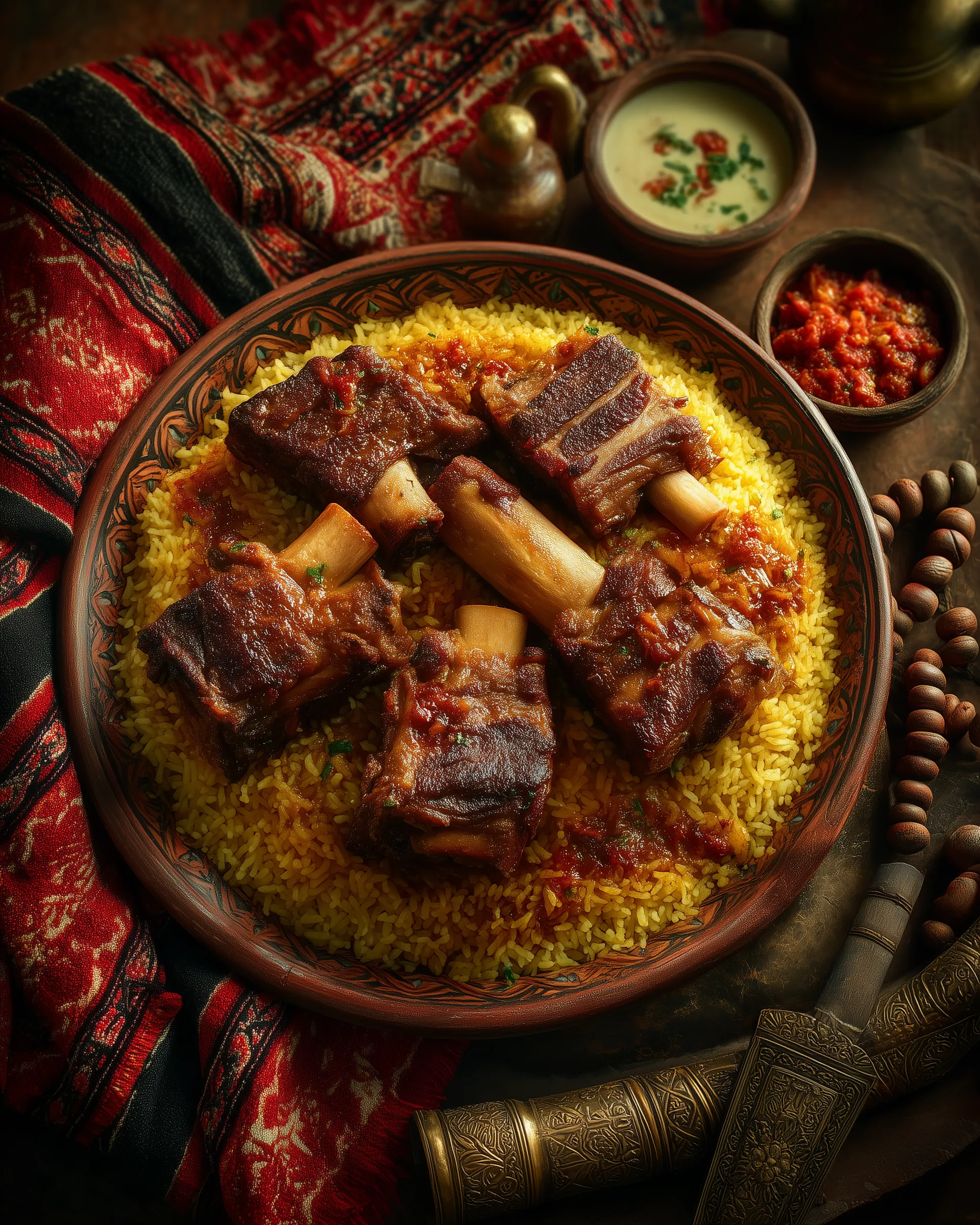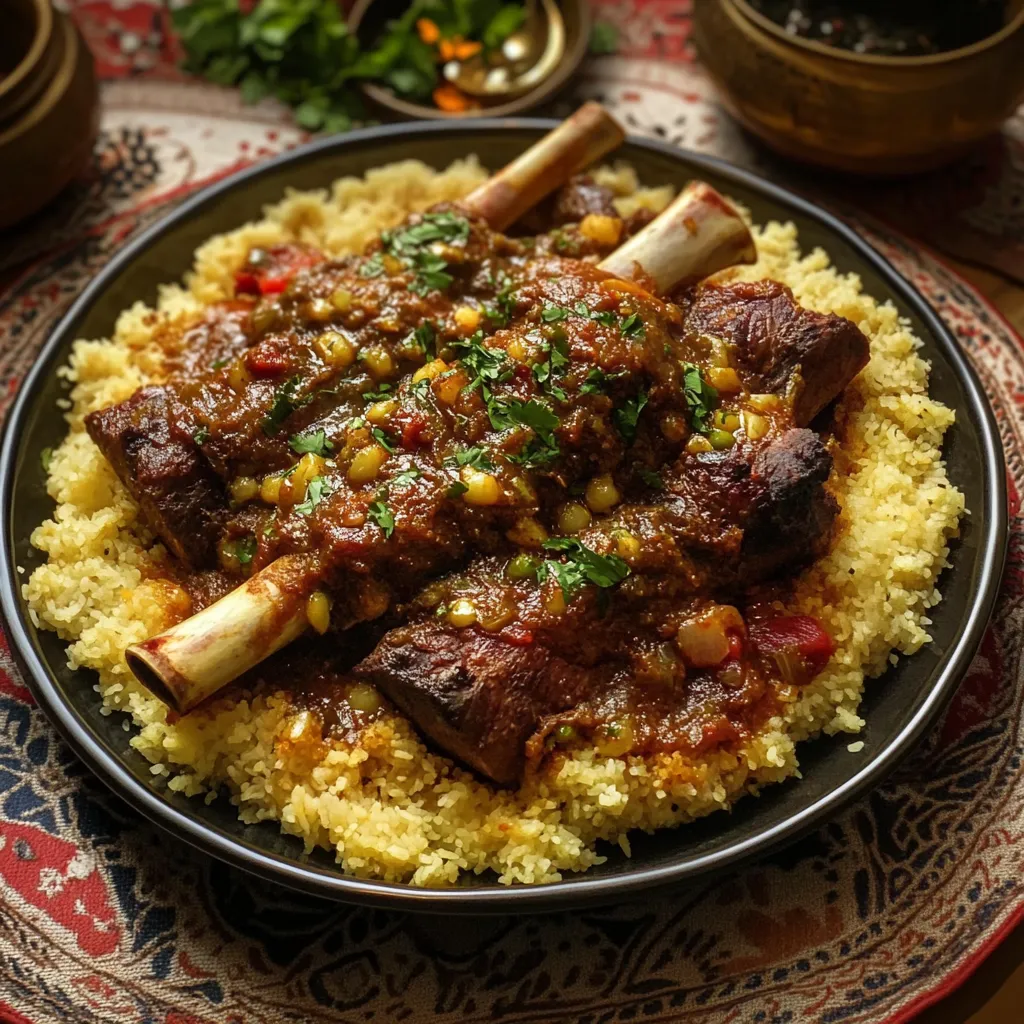 Save
Save
This traditional Yemeni Lamb Mandi delivers aromatic rice and fall-apart tender lamb, inspired by centuries-old methods but fully adapted for a home kitchen. It’s the closest you can get to a festive Yemeni feast without an underground oven, perfect for gatherings or a Sunday family meal when you really want to impress.
I first made this for a family Eid dinner and the entire platter was gone in under fifteen minutes. Now even picky eaters ask for this mandi by name whenever we get together for special occasions.
Ingredients
- Lamb ribs or shoulder: using bone-in creates the richest flavor and yields a hearty broth
- Ghee or neutral oil: provides authentic richness and helps with browning
- Salt: essential for bringing out the flavor of both rice and meat
- Black pepper: adds warmth and pairs well with the lamb
- Turmeric: for a golden color and earthy undertone
- Cinnamon: both ground and stick type gives warmth and complexity
- Cumin: brings savory depth and is best when freshly ground
- Ground cloves and cardamom pods: give true Yemeni aroma choose green cardamom if possible
- Garlic and onion: these make the flavor base for both lamb and rice
- Basmati rice: pick long-grain for the fluffiest result rinse well to remove excess starch
- Bay leaf: adds a subtle herbal note
- Fresh tomatoes and chilies for the sahawiq: select ripe, fragrant tomatoes
- Vinegar or lemon juice: gives brightness to the sauce opt for fresh lemon if available
- Plain yogurt for the laban: pick full-fat for creaminess
- Water and lamb broth: ensure everything cooks up tender and full of flavor
Step-by-Step Instructions
- Prepare the Lamb:
- Thoroughly rub the lamb with turmeric, salt, black pepper, and ghee to coat every surface. This helps the spices penetrate the meat. Place the lamb pieces in a large heavy pot and add garlic, quartered onion, cinnamon stick, cardamom pods, ground cloves, and water. Cover tightly and simmer on low for roughly ninety minutes to two hours until the lamb is extremely tender but not falling apart. Remove the lamb and broil or grill under high heat for ten minutes so the surface caramelizes and chars just slightly copying traditional mandi’s fire-roasted finish. Save the broth for the rice
- Cook the Rice:
- Rinse and soak the basmati rice for at least thirty minutes to ensure each grain cooks up separate and fluffy. In a Dutch oven or heavy-bottomed pot, heat ghee over medium and sauté finely chopped onion and minced garlic until deeply golden brown as this gives the rice its sweet-savory backbone. Add bay leaf, cardamom pods, cinnamon, turmeric, and cumin to bloom the spices fully in the oil. Stir the drained rice into the pot and let it toast gently for two minutes to coat the grains. Pour in two and a half cups of the reserved lamb broth and a good pinch of salt. Bring to a boil, then cover and simmer on the lowest heat for up to eighteen minutes until the rice is tender and every drop of liquid is absorbed
- Prepare the Red Mandi Sauce:
- Roughly chop the tomatoes and deseed the chilies if less heat is preferred. In a blender, blend tomatoes, garlic, chilies, and your choice of vinegar or lemon juice with a bit of salt until the mixture is completely smooth and bright red. Taste and adjust salt for a punchy spicy dip
- Whisk the Laban:
- Combine plain yogurt with salt and just enough water to reach a pourable consistency. Whisk until completely smooth and slightly frothy for a cooling drizzle
- Assemble and Serve:
- Using a wide platter, spread the fluffy rice as the bottom layer. Top with the broiled lamb pieces in the center. Serve extra with bowls of spicy red sauce and laban yogurt on the side so everyone can build their perfect bite. For true Yemeni flair, garnish with fried onions or raisins and present with coffee and traditional tableware if you have them
 Save
Save
Storage Tips
Refrigerate the lamb and rice separately in airtight containers for up to three days for best flavor and texture Reheat the rice gently with a splash of broth or water on low to restore moisture You can freeze leftover lamb for two months but I prefer eating mandi fresh for the most authentic tenderness
Ingredient Substitutions
Chicken thighs or legs can replace lamb for a lighter but still aromatic mandi If you do not have ghee, use high-quality olive oil or unsalted butter Aromatic basmati is classic but long-grain jasmine rice also works in a pinch If Sahawiq is too spicy, blend in roasted red peppers or use less chili
Serving Suggestions
Mandi shines as a main dish for feasts but try serving with flatbread or a crisp salad of cucumber, tomatoes, and parsley for cooling contrast If you have it, a side of pickled vegetables or a simple cabbage slaw balances the richness Finish the meal with a cup of spiced Yemeni coffee or mint tea for a truly authentic touch
Cultural Context
Mandi’s roots are centuries old as a celebratory meal for weddings, Eid, and special occasions across Yemen and the wider Arabian Peninsula Traditional mandi is cooked in a tandoor-like pit allowing the meat juices to drip into the rice below this stovetop version preserves those pooled flavors using homemade broth Even Ramadan gatherings and simple family dinners feature mandi as the centerpiece platter to share
Recipe FAQs
- → Can I substitute chicken for lamb?
Yes, chicken is a popular alternative for this dish and requires a shorter cook time to achieve tenderness.
- → What makes the rice golden and fragrant?
A blend of turmeric and ghee adds golden color and aroma, while whole spices infuse the rice during cooking.
- → How is the spice level controlled?
The main dish is aromatic rather than hot. Heat comes from the side tomato-chili sahawiq, so you can adjust to taste.
- → Is special equipment needed?
No specialized tools are required—just a heavy pot for simmering and an oven or broiler for finishing the lamb.
- → How do you serve the dish for authenticity?
Spread rice on a large platter, arrange lamb on top, and serve with sahawiq and laban for a genuine Yemeni experience.
- → Can I prepare components ahead?
Both the lamb and rice can be cooked ahead and reheated gently. Sauces are best made fresh before serving.
